Military Close Combat
Development and Test Content
Development of the military sport
 Military close-combat is the general label for unarmed duel techniques under military operation conditions whose aim is to insure that some soldiers live through the duel and at the same time kill or at least completely disarm the opponent as fast as possible.
Military close-combat is the general label for unarmed duel techniques under military operation conditions whose aim is to insure that some soldiers live through the duel and at the same time kill or at least completely disarm the opponent as fast as possible.
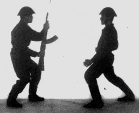 In the National People's Army (NPA) of the former German Democratic Republic (GDR) the military close combat was also a trademark for a military sport art. Members of the army trained in the close-combat system during their training and also in training groups during their leisure time. The military sport art Military Close-combat first officially emerged in 1986. It was however the result of decade-long developments.
In the National People's Army (NPA) of the former German Democratic Republic (GDR) the military close combat was also a trademark for a military sport art. Members of the army trained in the close-combat system during their training and also in training groups during their leisure time. The military sport art Military Close-combat first officially emerged in 1986. It was however the result of decade-long developments.
 Before the founding of the NPA in 1956, already in existence, apart from the Police (PP-People's Police) armed units, was the KVP (Kasernierte People's Police). Self-defence was instructed in both authorities like was in the Course book on Judo Self defence, verified in March 1952 by the publishing house for Police Special Literature, Berlin Wilhelmsruh. This self-defence was still characterised by the JIU-JITSU techniques of the pre-war times. It ended the appropriate police task of bringing attackers under control with the hold-down technique or the transport technique.
Before the founding of the NPA in 1956, already in existence, apart from the Police (PP-People's Police) armed units, was the KVP (Kasernierte People's Police). Self-defence was instructed in both authorities like was in the Course book on Judo Self defence, verified in March 1952 by the publishing house for Police Special Literature, Berlin Wilhelmsruh. This self-defence was still characterised by the JIU-JITSU techniques of the pre-war times. It ended the appropriate police task of bringing attackers under control with the hold-down technique or the transport technique. With the founding of the National People's Army in the former GDR, the close-combat system was taken up in the training programme for the military body-efficiency (MBE) / physical training (P.T). The training was regulated through service regulations (SR), complete instructions (I), and programme and standard catalogue instructions. The demand on the military body-efficiency (MBE) was determined by the SR 010/0/002.
With the founding of the National People's Army in the former GDR, the close-combat system was taken up in the training programme for the military body-efficiency (MBE) / physical training (P.T). The training was regulated through service regulations (SR), complete instructions (I), and programme and standard catalogue instructions. The demand on the military body-efficiency (MBE) was determined by the SR 010/0/002.
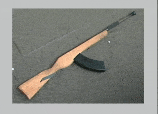 Every member of the army graduated after at least 2 hours of close combat with fence machine-pistol (MPi). The Fence MPi was in size and mass an exact imitation of the standard firearm weapon Machine-Pistol Automat Kalaschnikow 1947 (MPi AK-47) and was specially used in the physical training.
Every member of the army graduated after at least 2 hours of close combat with fence machine-pistol (MPi). The Fence MPi was in size and mass an exact imitation of the standard firearm weapon Machine-Pistol Automat Kalaschnikow 1947 (MPi AK-47) and was specially used in the physical training.
![]() Soldiers for reconnaissance and long-range reconnaissance, paratroopers and fight swimmers (seals) had more hours of training for the close combat at their disposal after every service course. They also trained in self-defence and unarmed defence from attacks with weapons.
Soldiers for reconnaissance and long-range reconnaissance, paratroopers and fight swimmers (seals) had more hours of training for the close combat at their disposal after every service course. They also trained in self-defence and unarmed defence from attacks with weapons.
 The used techniques from 1956 to 1986 of the old JIU-JITSU to the military close combat changed at the same time. The new system had to be easy to learn, effective, systematic and also have useable equipment in the combat field.
The used techniques from 1956 to 1986 of the old JIU-JITSU to the military close combat changed at the same time. The new system had to be easy to learn, effective, systematic and also have useable equipment in the combat field.
As a basis, people relied on the karate techniques. As a base, the NPA reproduced and supplied books from the West German Karate pioneer, Albrecht Pflüger, who through dark channels procured (e.g. the author also released his first book). In addition people used complex movements from the close combat programme of the Soviet Military Forces (see complex test course). This Karate foundation (punches, blocks, kicks) was combined with selected Judo elements (fall-school, levers, chokes and throws), elements of the shotgun, knife and spade fights and the self-defence. All these were united into one system.
Some officers deserve credit for their long years of hard work that resulted in a military sport:
- Lieutenant Colonel Michael Stölzner, chairman of the commission of military close combat for the management of the sport organisation of the land forces and defender of the close combat education.
- Lieutenant Colonel Hans-Jörg Tännert, paratrooper officer, instructor at the Officer's High School (OHS) for the land forces, training leader of a close combat trainings group at the OHS Löbau.
- Major Dr. Dietmar Kircheis, sport instructor at the Officer's High School for the land forces, JUDO-DAN-Holder, Karate training leader of the close combat training group at the OHS Löbau, consultant for the close combat educational films of the NPA army film studios in Berlin Babelsberg.
- Captain Andreas Förster, sport officer in the paratrooper battalion-40
- Captain Holger Arnold, sport officer in the air-storm regiment-40
- Captain Frank Pelny, troop and border reconnaissance officer, author of the "Documentation about the methodical training in Gjogsul" and "Handbook for training leaders in military close combat", contributed to the educational film "Close Combat: How train?"

 The techniques and test programme of the military close combat were in 1986 in the "Instruction for exercise, training and contest in the military sport art military close combat", confirmed and published at the military close combat commission of the sport organisation of the land forces. Tgb.-Nr W/48/1986.
The techniques and test programme of the military close combat were in 1986 in the "Instruction for exercise, training and contest in the military sport art military close combat", confirmed and published at the military close combat commission of the sport organisation of the land forces. Tgb.-Nr W/48/1986.
Test programme
The test programme has four graduation levels:
Yellow-, Orange-, Green- and Blue belt. In plan although never realised was the expansion to a brown belt and a black belt.
Frank Pelny was the first person in the GDR to successfully pass the test to the highest level at the time, the blue belt (2nd graduate level). This was on the 21.10.1988 from a commission in the air-storm regiment-40 in LEHNIN.
Every graduate level is tested in five areas:
- Athletic test Duration 3 minutes without a break.
1 minute hanging from the target wall with the feet (5 points per piece)
1 minute press ups on the fist knuckles. The feet should be on the third
lowest bar of the wall bars and the chest must touch the ground during
the press-ups. (3 points per piece)
1 minute skipping (from 50. 1 point for each piece) - Demonstration ability.
- Attach effectiveness.
- Defence ability.
- Fighting behaviour.
A sporting contest system for the military close combat was created to motivate and improve the fighting behaviour. At the same time there was a contest of three competitions:
- The athletic competition (corresponds to the athletic test)
- The technique competition (single demonstration of a complex test)
- The fight (free fight according to every qualification: 2x1 or 2x2 minutes determined the security equipment and protection vests until the mouth and deep protection).
The close combat vest (CCV-85) was developed especially for the contest and training with the attack technique. The vest has a complete torso protection with neck and additional forearm cuffs. The vest has about 5cm of thick padding and enables the execution of techniques with complete energy.
To improve the existing fight system, the courses on GJOGSUL in the air-storm regiment-40 in LEHNIN, POTSDAM were in 1988 implemented, a secret and fighter-rehearsed close combat system of the North Korean People's Army.
(more information under "History - GJOGSUL")
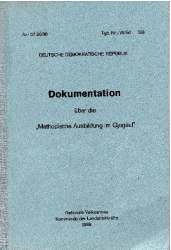
In analysis, the military close combat system with suitable elements from the fighter-rehearsed GJOGSUL was modified through these course experiences. As a result, the highly effective close combat system emerged and was spread everywhere in the National People's Army and to border troops.
The technical basis of GJOGSUL was through Captain Frank Pelny, a course participant by whom "Documentation about the methodical training in Gjogsul" (Ag 117 XLIII-03-056-89, Tgb.-Nr.: W/50/89, Az.: 57 20 08), detachment of the land forces of the NPA in 1989, described in text and graphically represented.
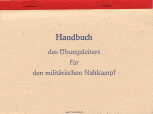
In the same year, the "Handbook for training leaders in military close combat" (Ag 117 VIII-03/253-89), 1989, committee of the sport organisation of the border troops of the GDR, also from Captain Frank Pelny was released. This pamphlet became an important functioning base for many instructors.
In June 1989, karate was also official in the GDR and made legal among the military forces. Through the political change in November 1989, the practical conversion of this possibility was no longer effective.
The political change and the reunion of the two German states saw the end of the military close combat system, although at this time, a new test programme was in preparation. This programme was technically more extensive and the experiences from the GJOGSUL course and the different currents with in the MCC commission were considered.
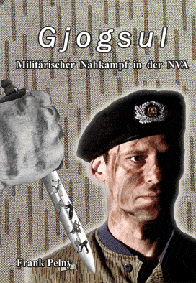
A presentation of the military close combat system including gjogsul successfully resulted in the book "Gjogsul - military close combat in the NPA" by Frank Pelny, released in 2005, published by Books on Demand Norderstedt / Germany (ISBN 3-8334-2228-9; 352 Pages; ca. 550 Photos).
(more informations under "SaCO-articles - SaCO-Books")
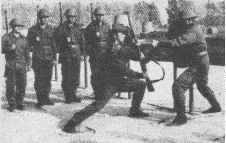
It must be noted that an training theme under the theme military close combat was produced in the NPA film studio in Berlin-Biesdorf, Frankenholzer-Weg. The film was called "Close Combat: How train?" (Requisitions -Nr. AII/156, 28min., 1983) and "Close Combat for specialists" (28min., 1987). Also in existence was a film on the training of close combat from the Soviet Airborne troops. Still in preparation was an training film on GJOGSUL.
The military close combat was a development of the land forces of the NPA. The air forces / air defence, the people's navy, especially the fight swimmers (seals) as well as the border troops with time took over part or the complete system of the military forces.

The Interior Ministry and the Ministry for Security of the GDR developed a characterised system based on their respective tasks. The system was described in the book "Duel training", (Interior Ministry, 1973, AG 106/290/73)
There were only three graduation levels in this system:
Service belt duel
- Level III (white-yellow belt),
- Level II (white-red belt),
- Level I (white-green belt).
Self-defence as well as transport and determination techniques were exclusively tested.
